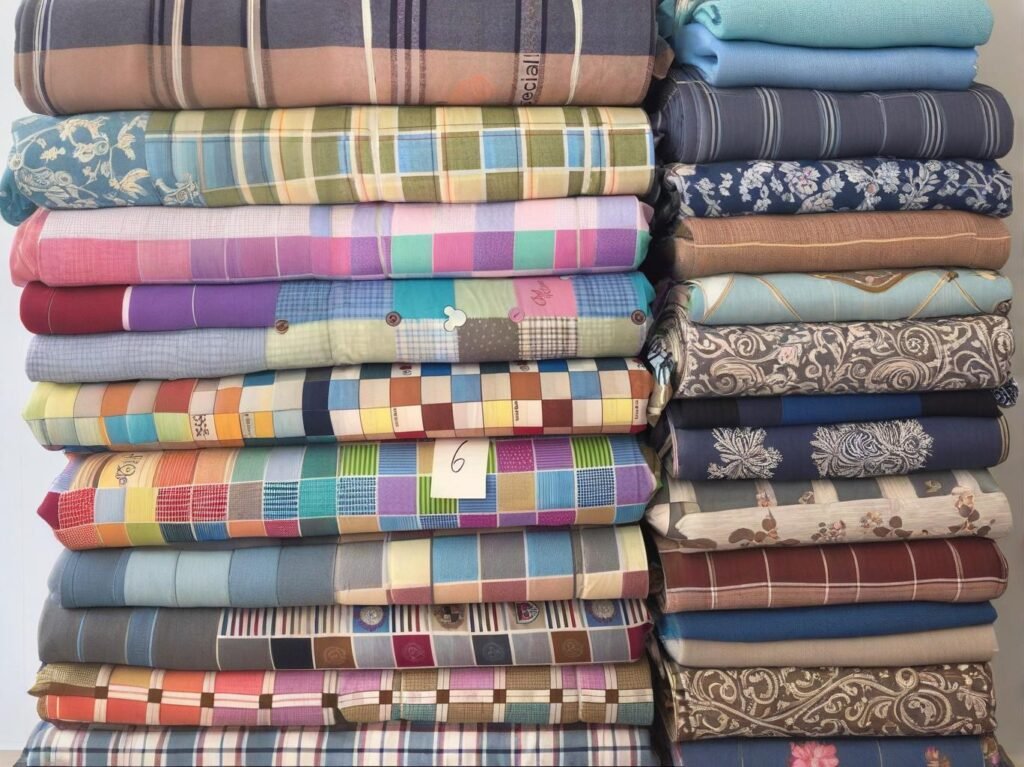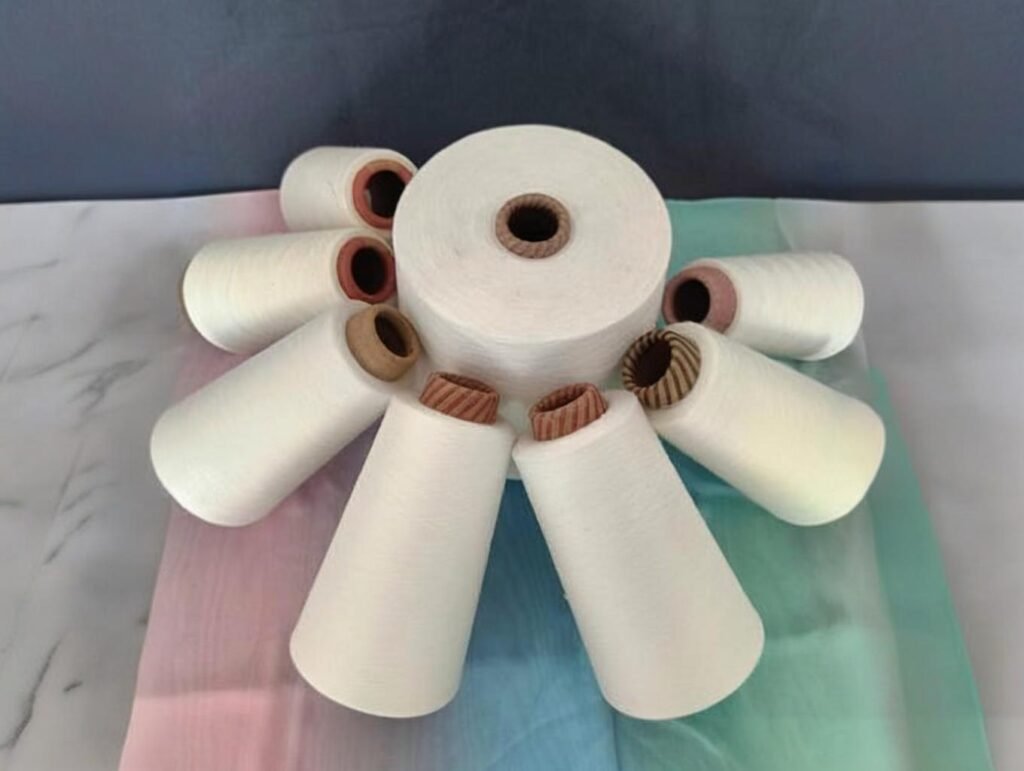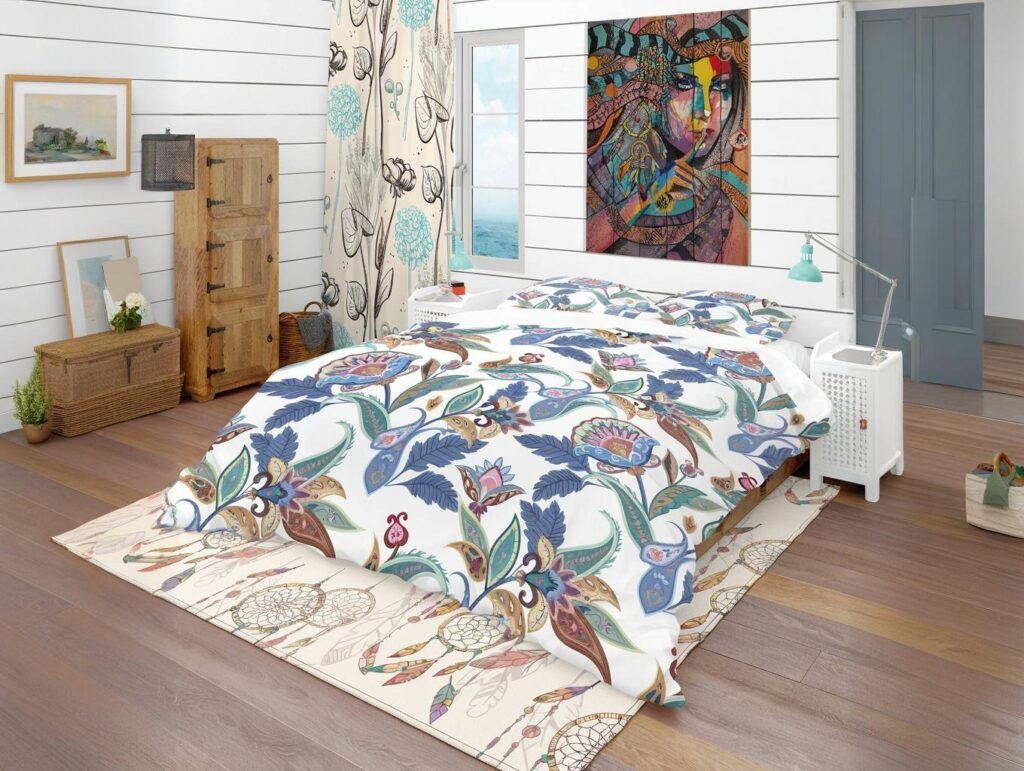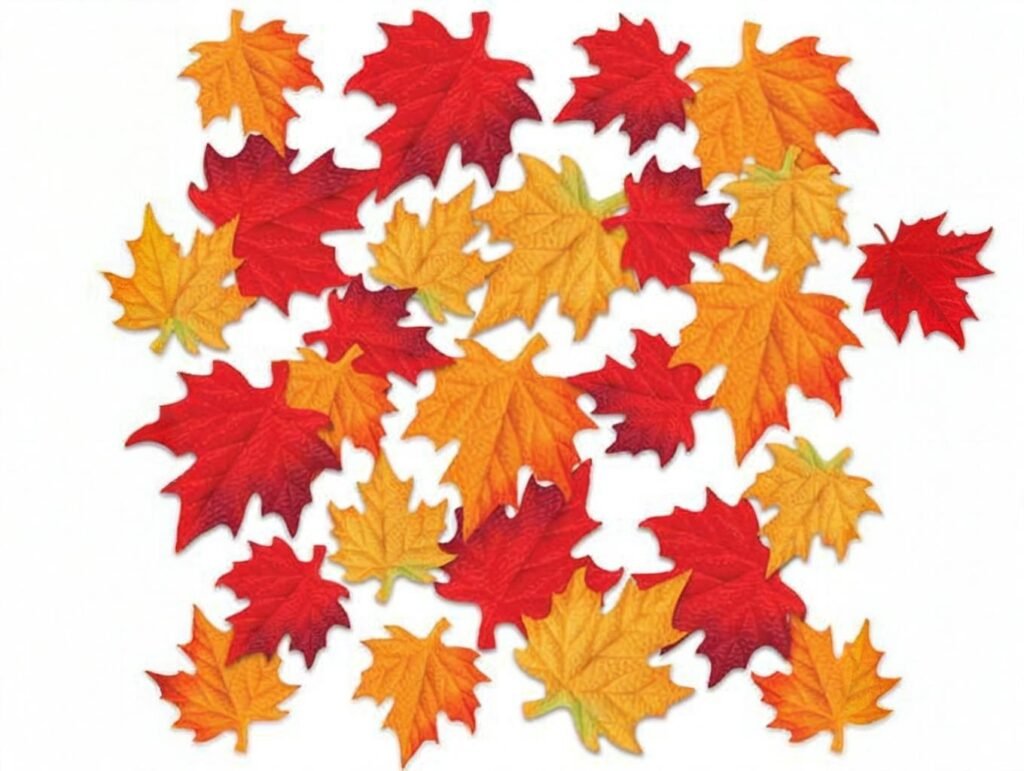In the high-stakes world of large-scale apparel production, fabric selection isn’t just about feel or appearance—it’s about performance under pressure. Two fabrics dominate the conversation: the classic purity of 100% cotton and the strategic versatility of polyester cotton blends. Both have been favored by designers and manufacturers for decades, but the question remains: which one truly delivers more value when the garments are being produced in volume?
The short answer is: it depends. Polyester cotton blends generally offer better durability, wrinkle resistance, and cost efficiency, while 100% cotton provides superior comfort, breathability, and a natural look and feel. The ideal choice hinges on your product type, budget, and brand positioning.
Let’s rewind to a real-world scenario. A French casualwear label initially launched its summer shirts in 100% cotton poplin, aiming for softness and drape. However, frequent customer returns due to wrinkles and shrinkage led them to switch to a 65/35 poly-cotton blend in their next production run. The result? Fewer complaints, faster ironing in retail display setups, and an 18% increase in gross margin.
So, is there a clear winner between polyester cotton and 100% cotton? Let’s examine the facts, from fiber composition to sustainability, so you can make the best material decision for your apparel needs.
What Is the Difference Between Polyester Cotton and 100% Cotton Fabric?

Polyester cotton is a blended fabric combining the softness and breathability of cotton with the strength and wrinkle-resistance of polyester. In contrast, 100% cotton is a fully natural fiber known for its comfort, but it tends to wrinkle and shrink more easily.
Composition and Structure
| Fabric Type | Typical Ratio | Fiber Source |
|---|---|---|
| 100% Cotton | 100% Cotton | Natural (plant-based) |
| Polyester Cotton Blend | Commonly 65/35 or 50/50 | Synthetic (polyester) + natural (cotton) |
- 100% Cotton: Absorbs moisture well, soft on the skin, highly breathable.
- Poly-Cotton Blend: Holds shape better, dries faster, more durable with less wrinkling.
Manufacturing Differences
- Cotton requires combing, ginning, and spinning from raw fiber.
- Poly-cotton blends are woven using pre-spun yarns, often heat-set for dimensional stability.
Visual and Tactile Differences
- 100% cotton typically has a matte, natural finish with a soft drape.
- Blended fabrics may feel smoother or slightly synthetic depending on the polyester percentage.
Case Perspective
A Southeast Asian school uniform supplier switched from 100% cotton twill to a 65/35 poly-cotton version. The fabric looked nearly identical but wore significantly better across an academic year—with no color fading, minimal ironing needs, and far fewer replacement orders.
Which Fabric Performs Better in Terms of Durability and Shrinkage?
Polyester cotton blends outperform 100% cotton in terms of long-term durability, resistance to shrinkage, and general shape retention. While cotton is more skin-friendly, it tends to degrade faster under repeated industrial laundering or tension stress.
Performance Comparison Table
| Feature | 100% Cotton | Polyester Cotton Blend |
|---|---|---|
| Shrinkage Rate (avg) | 3–8% | <2% (if heat-set) |
| Tear Resistance | Moderate | High |
| Color Retention | Fades over time | Excellent |
| Pilling Resistance | Low | Medium to High |
| Lifespan (Wash Cycles) | 50–80 | 100–150 |
Testing Insight
According to a 2023 report by the American Association of Textile Chemists and Colorists:
- 100% cotton t-shirts lost 18% tensile strength after 40 washes.
- 65/35 poly-cotton retained 90% strength after 80 washes.
Field Application: Hospitality Industry
A major hotel group outfitted its housekeeping staff with 100% cotton uniforms, only to find garments degraded quickly due to repeated washing with industrial detergents. Upon switching to a 50/50 poly-cotton blend, they extended garment use by nearly double, reducing replacement costs significantly.
The Tradeoff Spectrum
- Cotton delivers comfort but needs care (e.g., preshrinking, gentle washing).
- Poly-cotton offers robustness and easier maintenance, perfect for high-turnover or functional garments.
How Do Cotton and Poly-Cotton Blends Compare in Comfort and Wearability?

100% cotton is generally more comfortable against the skin due to its natural softness, moisture absorption, and breathability. Polyester cotton blends, while more durable and wrinkle-resistant, can feel less “natural” but offer better performance in high-movement or humid conditions.
Key Comfort Indicators
| Comfort Factor | 100% Cotton | Polyester Cotton Blend |
|---|---|---|
| Breathability | Excellent | Good (depends on blend ratio) |
| Softness | Naturally soft | Varies by blend & finish |
| Moisture Absorption | High | Moderate (wicks more than absorbs) |
| Skin Sensitivity | Hypoallergenic | May irritate sensitive skin |
| Odor Control | Moderate (retains odor) | Better with moisture-wicking finish |
Everyday Wear Comparison
- Cotton excels in T-shirts, sleepwear, and casual garments where breathability and skin comfort are key.
- Poly-cotton performs in workwear, school uniforms, and sports apparel that need to withstand friction, washing, and stretching.
Temperature and Climate Impact
- In hot, dry climates, 100% cotton helps regulate body heat by absorbing sweat.
- In humid or tropical environments, poly-cotton dries faster and resists mildew better.
Real Use Case: Fitness Apparel
A UK-based fitness brand tested both 100% cotton and 60/40 poly-cotton for their training tee line. The cotton version was praised for comfort in cool weather but received poor feedback in sweat-heavy sessions. The poly-cotton line, with a mesh weave, offered a better balance between softness and sweat management, leading to 3x higher reorder rates.
Comfort Perception vs Practicality
Customers often associate cotton with quality, but perception is evolving. Performance-focused audiences—such as athletes, factory workers, or students—are increasingly open to blends when comfort meets function.
Is Polyester Cotton More Cost-Effective for Mass Apparel Manufacturing?
Yes. Polyester cotton blends are more cost-effective than 100% cotton for bulk production due to lower raw material costs, higher fabric yield, fewer shrinkage-related issues, and reduced post-processing like ironing or pre-shrinking.
Cost Efficiency Analysis
| Cost Factor | 100% Cotton | Polyester Cotton Blend |
|---|---|---|
| Raw Material Cost (USD/kg) | $2.80–$5.00 | $1.80–$3.20 |
| Dyeing & Finishing Cost | Higher (absorbs more dye) | Lower (less dye absorption) |
| Yield (meters/kg) | Lower | Higher |
| Post-Wash Quality Risk | Shrinking, color loss | Minimal |
| Ironing & Packaging Labor | Higher | Lower |
Real-World Data: Order Efficiency
A Latin American apparel manufacturer compared 10,000-piece runs of 100% cotton and 65/35 poly-cotton polos:
- Shrinkage Rejections: Cotton – 9.2%, Poly-cotton – 1.1%
- Ironing Labor Hours: Cotton – 250 hours, Poly-cotton – 75 hours
- Per-Unit Profit Margin: Cotton – $1.25, Poly-cotton – $2.10
Storage and Shipping Efficiency
- Poly-cotton holds its shape better in compressed packaging, reducing wrinkling during transit.
- Lower moisture retention in polyester blends also reduces mildew risk in sea freight.
Minimum Order Quantity Flexibility
Blended fabrics can often be woven to spec with lower MOQ, especially for poly-dominant blends. Cotton, particularly organic or combed varieties, often has higher MOQ requirements due to yarn dyeing or weaving limitations.
Strategic Takeaway
If your brand values cost predictability, low return rates, and operational efficiency, poly-cotton is the smarter option for bulk runs. However, if you’re building a luxury or sustainable identity, cotton—even at a higher cost—might offer better long-term brand equity.
How Do These Fabrics Respond to Printing, Dyeing, and Branding Techniques?

100% cotton is widely regarded as the best natural canvas for vibrant dye absorption and pigment printing. However, polyester cotton blends—especially those with a higher polyester ratio—excel in sublimation and heat-transfer printing, offering sharper, longer-lasting results for graphic-heavy garments.
Print & Dye Method Compatibility
| Method | 100% Cotton | Poly-Cotton Blend |
|---|---|---|
| Reactive Dyeing | ★★★★★ | ★★★☆☆ |
| Pigment Printing | ★★★★☆ | ★★★☆☆ |
| Discharge Printing | ★★★★☆ | Not suitable |
| Sublimation | Not suitable | ★★★★☆ (polyester-heavy blends) |
| Heat Transfer Vinyl (HTV) | ★★★☆☆ | ★★★★☆ |
| Screen Printing | ★★★★★ | ★★★★☆ |
Key Observations
- Cotton absorbs dye deep into fibers, giving prints a natural look with rich texture—but may fade or bleed with frequent washing.
- Poly-cotton blends tend to “hold” ink on the surface longer, especially when polyester is dominant. This improves print sharpness and reduces color loss.
Branding Flexibility
For logos, text, or full-color designs:
- Use cotton for natural, vintage aesthetics or eco-conscious branding.
- Use poly-cotton blends for vibrant, precise, modern graphics, especially in promotional wear or sportswear.
Case Study: Merchandise Printing
A U.S. band chose 100% cotton for a vintage-style T-shirt line using water-based screen printing. Fans loved the soft feel and faded dye effect. But for their promotional jerseys, they switched to 65/35 poly-cotton with sublimated graphics—achieving brilliant color accuracy and zero cracking after 20+ washes.
Technical Challenges
- Cotton can shrink during high-heat curing, requiring careful planning in print alignment.
- Blends with lower cotton percentages may reject certain dyes without pretreatment.
Finishing Tips
- For 100% cotton, pre-wash garments to avoid shrink-induced distortion after printing.
- For poly-blends, ensure heat press calibration to avoid ghosting or ink migration.
What Are the Sustainability and Environmental Considerations of Each Fabric?
100% cotton is biodegradable and renewable but resource-intensive in cultivation. Polyester cotton blends use less water and offer longer garment lifespans but pose challenges in biodegradability and contribute to microplastic pollution.
Environmental Impact Summary
| Sustainability Factor | 100% Cotton | Polyester Cotton Blend |
|---|---|---|
| Biodegradability | ✓ Fully biodegradable | ✗ Not fully biodegradable |
| Water Consumption (L/kg) | 10,000–20,000 | <1,000 (due to synthetic component) |
| Pesticide Use (conventional) | High | N/A (no crop involved) |
| Energy Use in Production | Moderate | High (polyester is energy-intensive) |
| Recyclability | Low (unless mechanically recycled) | Moderate (difficult due to blend) |
| Microplastic Pollution | None | High (from polyester) |
Recycled Alternatives
- Recycled Cotton: Made from pre/post-consumer waste but has shorter fiber length and lower strength.
- Recycled Polyester (rPET): Derived from plastic bottles; can be blended with cotton to reduce environmental impact.
Certifications to Look For
| Certification | Applicable Fabric | Meaning |
|---|---|---|
| GOTS | 100% Cotton | Organic farming, chemical-free processing |
| OEKO-TEX Standard | Both | Tested for harmful substances |
| GRS | Recycled Poly Blends | Verifies use of recycled materials |
| BCI | Cotton | Promotes sustainable cotton farming |
Brand Implications
- Eco-focused brands often choose 100% organic cotton to align with sustainability narratives.
- Brands targeting performance and fast fashion may opt for poly-blends but should consider offsets, rPET, or recycling partnerships.
Consumer Sentiment Insight
According to a 2024 McKinsey & Company survey:
- 68% of Gen Z consumers prefer buying apparel made from “natural” or “eco-labeled” fabrics.
- 52% said they would pay more for sustainably made cotton versus synthetics.
Real Brand Pivot
An Australian fashion label moved from standard poly-cotton to a 50/50 blend of organic cotton and rPET. The switch helped them reduce water use by 72% per garment and secured partnerships with two major eco-conscious online retailers.
Which Garment Categories Are Best Suited for Cotton or Polyester Cotton Blends?

Different fabric types suit different product categories. 100% cotton is ideal for comfort-oriented or luxury apparel, while polyester cotton blends perform best in workwear, uniforms, and activewear where strength, washability, and wrinkle resistance are key.
Garment Use Case Matrix
| Apparel Category | Recommended Fabric | Reason |
|---|---|---|
| Basic T-Shirts | 100% Cotton or 60/40 Blend | Comfort and breathability for all-day wear |
| Corporate Uniforms | 65/35 Poly-Cotton | Easy care, wrinkle resistance, professional appearance |
| Children’s Apparel | 100% Cotton or Organic | Softness, skin-friendliness, hypoallergenic qualities |
| Workwear & Uniforms | 65/35 Poly-Cotton | Industrial durability, stain resistance, low shrinkage |
| Activewear | 50/50 or 60/40 Blends | Moisture control and stretch compatibility |
| Loungewear/Pajamas | 100% Cotton | Maximum softness, ideal for sensitive skin |
| Promotional Tees | 65/35 or 50/50 Blends | Cost efficiency, better print performance |
| Fashion Apparel | Depends on aesthetic goals | Cotton for vintage/natural, blends for structure or modern style |
Real-Life Brand Deployment
A U.S.-based startup launched its men’s basics line using 100% cotton for tank tops and poly-cotton for henley tees. The reason? Tanks needed maximum comfort and moisture absorption for warm weather, while the henleys were designed for transitional wear, where shape retention and easier care were essential.
Performance vs Perception
- Cotton wins when targeting boutique, natural, or skin-sensitive markets.
- Blends dominate when targeting longevity, industrial laundering, and cost-per-wear value.
Region & Climate Considerations
- In hot, dry markets, cotton’s breathability is a selling point.
- In humid or tropical markets, polyester blends dry faster and resist mildew better.
Do Leading Apparel Brands Prefer Polyester Cotton or 100% Cotton—And Why?
Top apparel brands strategically use both 100% cotton and polyester cotton blends depending on their brand identity, target market, product use, and price positioning. The choice is not binary—it’s about aligning fabric traits with business and customer priorities.
Brand Strategy Table
| Brand Type | Fabric Preference | Strategic Reasoning |
|---|---|---|
| Premium Lifestyle | 100% Cotton / Organic Cotton | Focus on quality, softness, eco-positioning |
| Fast Fashion | Poly-Cotton Blends | Cost-effective, faster drying, fewer returns |
| Workwear & Uniforms | 65/35 Blends | High durability, easy care, long-term lifecycle |
| Athleisure | Poly-Cotton or Poly-Rayon | Stretch, sweat management, lightweight performance |
| Eco-Focused Labels | Organic Cotton / Recycled Mix | Marketing appeal, sustainability compliance |
Brand Examples
- Uniqlo uses both cotton and poly-blends across product categories for functionality and cost optimization.
- Everlane heavily markets organic cotton to reinforce its sustainable narrative.
- Gildan and Fruit of the Loom offer both 100% cotton and poly-cotton lines to serve diverse global markets and price points.
Product Lifecycle Thinking
- Brands focused on durability choose poly-blends for better ROI over time.
- Brands aiming for tactile luxury or wellness lean into pure cotton.
Consumer Behavior Trends
A Statista 2024 report found:
- 62% of consumers believe cotton is more eco-friendly (even when blends are more energy-efficient).
- 70% of professional uniform purchasers prioritize polyester blends for lower maintenance.
Case Study: Smart Category Diversification
A Middle Eastern fashion brand chose 100% cotton for its Ramadan collection (comfort, cultural expectations) but used poly-cotton for year-round basics. This hybrid model allowed them to balance storytelling and cost, resulting in a 22% margin improvement without compromising brand identity.
Which Fabric Is Truly Better?
There is no one-size-fits-all answer. 100% cotton offers unmatched comfort, natural appeal, and eco-friendly credentials, while polyester cotton blends provide superior durability, wrinkle resistance, color retention, and cost efficiency.
Choose 100% cotton if your collection prioritizes softness, breathability, or sustainability storytelling. Choose poly-cotton blends if your focus is performance, longevity, and operational efficiency in mass production.
At SzoneierFabrics, we help global apparel buyers navigate these choices with expert consultation, fast sampling, and low MOQ options. Whether you’re producing uniforms, casualwear, eco-collections, or print-heavy merchandise, we offer certified, high-quality cotton, polyester, and blended fabrics tailored to your needs.
Contact us today for a free consultation, swatch request, or bulk quote.

